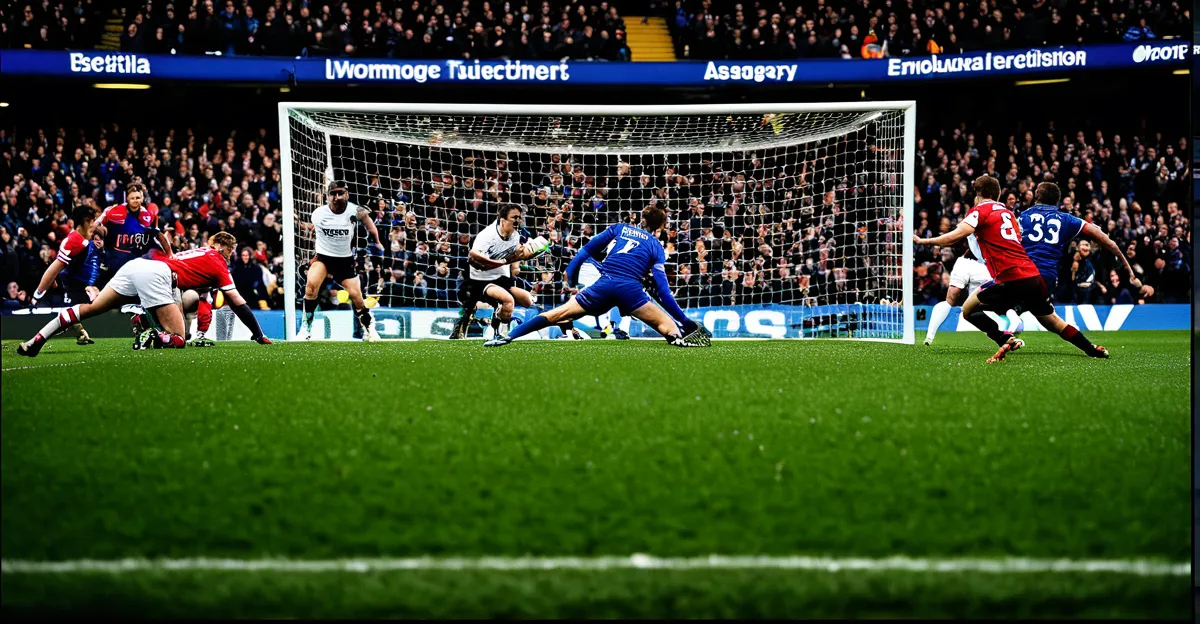Current Trends in UK Sports Media
The landscape of UK sports coverage is undergoing significant changes due to the rise of digital platforms. Traditional media, such as TV and print, have been historically dominant. However, the digital transformation is shaping how sports are covered, offering viewers more flexibility and control over what they watch. The growing popularity of streaming services and new subscription models are transforming sports viewership. These platforms provide on-demand access to games, highlights, and exclusive content, challenging traditional broadcasting’s monopoly.
Moreover, the influence of social media is undeniable in this modern era. It plays a crucial role in audience engagement and fan interaction. Sports fans use platforms like Twitter, Instagram, and Facebook to follow their favourite teams and athletes in real-time, partake in discussions, and engage with a global community. This engagement is fostering a new form of participatory culture where fans are not just passive viewers but active participants.
Topic to read : What Are the Emerging Challenges Facing UK Sports Teams Today?
Overview of Traditional vs. Digital Platforms
While traditional television still holds a significant share in sports broadcasting, digital platforms offer unique features such as interactive content and personalized recommendations that cater to individual viewer preferences. This shift is resulting in a more tailored viewing experience, ultimately increasing audience satisfaction.
Growth of Streaming Services
Streaming services cater to a growing demand for flexibility, allowing viewers to watch content at their convenience. Subscription models offer both reduced advertisement interruptions and expansive content libraries, making them an attractive alternative to traditional cable packages. The combination of affordability and accessibility is contributing to a steady rise in their adoption.
Topic to read : What Are the Hidden Challenges Facing Elite UK Athletes?
Influence of Social Media
Social media transforms fan interaction, enabling direct communication with athletes and teams. This interaction is heightened by live updates, minute-by-minute analysis, and viral fan-generated content. Such features are not only enhancing fan experience but are also influencing the editorial direction of sports media outlets, urging them to focus on real-time, dynamic reporting.
Impact of Technology on Sports Media
The incorporation of smart devices and apps is revolutionizing sports media by offering fans increased accessibility and personalization. Viewers can now engage with sports content across multiple devices and formats, making the experience far more immersive than traditional methods.
The Rise of Smart Devices and Apps
Smartphones and tablets, alongside dedicated sports apps, allow for instantaneous updates and live streaming on-the-go. These innovations in broadcasting cater to a tech-savvy audience that values convenience and mobility. Apps provide a tailored experience through alert notifications, varied camera angles, and the ability to participate in discussions during live events.
Virtual Reality and Augmented Reality in Sports Coverage
The advent of virtual reality (VR) and augmented reality (AR) technologies is transforming how sports are covered and consumed. These mediums offer immersive experiences by simulating live environments, allowing fans to feel as if they are in the stadium. AR, in particular, enhances live broadcasts with interactive graphics and statistics, enriching the viewing experience.
AI and Data Analytics in Sports Reporting
AI and data analytics are becoming integral to digital sports journalism, providing deeper insights and enhanced audience engagement. These tools help uncover patterns and generate content that resonates with viewer preferences. AI also aids in automating news gathering and creating personalized highlights, ensuring fans receive the most relevant information promptly.
Overall, the integration of these technologies is redefining traditional sports media, setting the stage for a more connected and informed fan base.
Shifts in Audience Consumption Habits
As the digital transformation progresses, how audiences consume sports media is evolving significantly. In recent years, we have observed a marked shift towards mobile viewership, with many preferring to stream sports content on smartphones and tablets rather than relying on traditional TV.
Demographics Shaping the Future of Sports Media Consumption
Young viewers, in particular, are at the forefront of this change, valuing the flexibility and on-demand access that digital platforms provide. This demographic is shaping the future of sports media consumption, pushing broadcasters to innovate and tailor content to meet their preferences and viewing habits.
Importance of Personalized Content for Audience Retention
In today’s competitive media environment, the importance of personalized content cannot be overstated. Viewers are increasingly drawn to platforms that offer personalized recommendations and interactive features that cater to their interests. Such offerings not only enhance audience engagement but also play a crucial role in audience retention. By tailoring content, sports media outlets can create more meaningful connections with their audiences, ensuring that consumption remains high amidst the vast array of available media choices.
Case Studies of Evolution in Sports Media
As the sports media landscape shifts, UK sports entities are continually adapting to remain competitive. One prominent example is the BBC, which has embraced digital transformation by launching platforms like BBC iPlayer, providing live streaming and on-demand content to cater to diverse viewer preferences. The incorporation of apps and online features has allowed users more ways to engage with their favourite sports content flexibly.
Notable UK Sports Media Companies and Their Adaptations
Sky Sports is another key player that has successfully navigated the digital era. They have invested in technology, offering multi-platform experiences with live updates and virtual reality (VR) features. This strategy has not only captured the attention of tech-savvy viewers but also provided a more immersive fan experience.
Successful Integration of Social Media Strategies by Sports Teams
Sports teams across the UK have significantly benefited from integrating social media into their engagement strategies. Clubs like Manchester United and Liverpool FC have leveraged platforms such as Twitter and Instagram to engage directly with fans, strengthening loyalty and expanding their global reach. These interactions range from real-time game updates to behind-the-scenes content, fostering a closer connection between teams and supporters.
Unique Partnerships Between Sports Leagues and Tech Companies
In a bid to innovate, partnerships between sports leagues and technology firms have become more prevalent. An example is the collaboration between the Premier League and Amazon Prime, which streams select matches exclusively on its platform, showcasing how digital partnerships can enhance content delivery and reach new audiences.
The above examples underline how adaptation and innovation in digital platforms are crucial for staying relevant in the sports media domain. By embracing these changes, companies and teams continue to engage diverse and increasingly demanding audiences.
Predictions for the Future of Sports Media in the UK
As UK sports media continues to evolve, several emerging trends and technologies are poised to redefine the landscape. Anticipated advancements in sports technology will further integrate with traditional and digital platforms, enhancing both viewer experiences and the operational aspects of broadcasting. With the continuous rise of eSports, this segment is expected to gain more prominence, potentially becoming a staple in mainstream sports coverage.
Anticipated Advancements in Sports Technology
One significant technological advancement predicted is the increase in sophisticated broadcasting techniques such as 5G-enabled streaming, which promises smoother, high-definition coverage. Moreover, innovations in artificial intelligence are set to revolutionize content curation, providing hyper-personalized content that aligns closely with viewer interests. This shift aims not only to improve how sports are consumed but to create more engaging narratives that captivate diverse audience demographics.
The Role of eSports and Interactive Content
eSports, with its blockbuster appeal, is making a substantial impact on traditional sports media. This genre offers interactive content that engages viewers in ways conventional broadcasts cannot, such as interactive chat rooms and audience-driven decisions during live streams. As eSports ecosystems become more integrated into mainstream programming, traditional broadcasters may incorporate similar interactive elements to remain competitive.
Future Dynamics Between Traditional Broadcasting and Emerging Platforms
The dynamic between traditional broadcasting and digital platforms will likely continue to shift. As newer platforms gain more ground, they challenge the status quo of how sports content is distributed. Conventional television may ultimately focus more on live events and exclusive coverage, while digital platforms will enhance personalization and accessibility. This transition will compel broadcasters to not only adapt but innovate continuously, leveraging data analytics and audience insights to stay relevant.
Through these advancements and shifts, the future of sports media in the UK will emerge as a blend of traditional methods enriched by digital innovation, catering to both tech-savvy audiences and traditional viewers alike.









